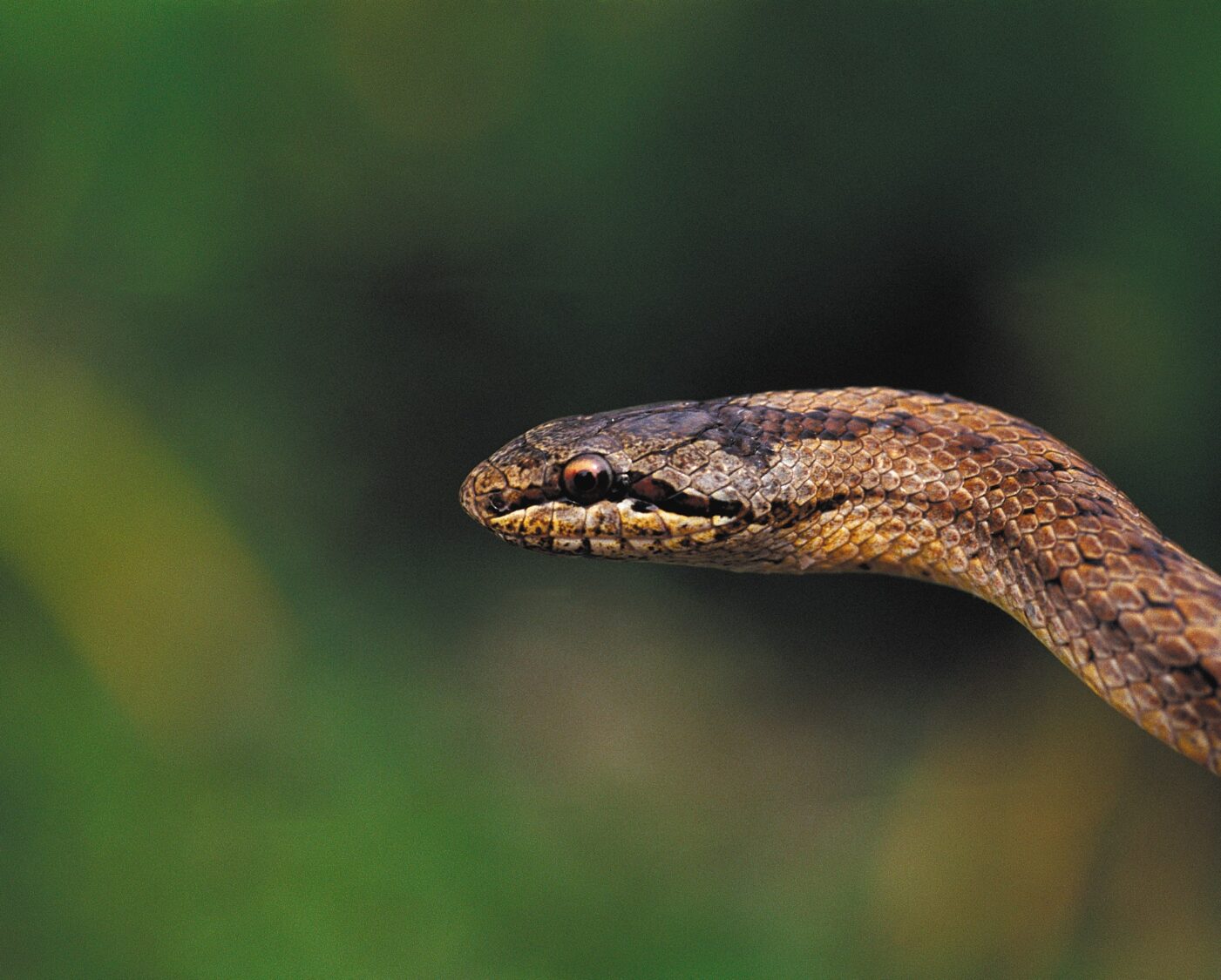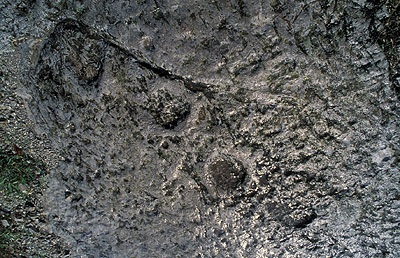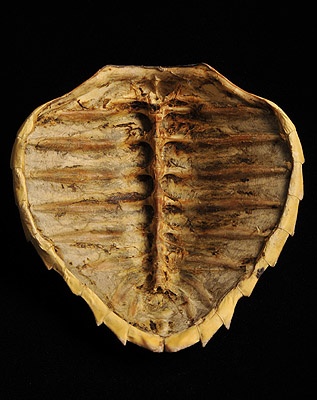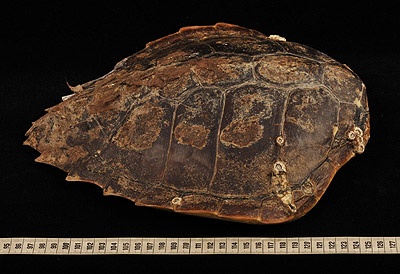Slovenia is inhabited by 22 reptile native species and 1 non-native species (Trachemys scripta turtle, which includes the Red-eared Slider and the Cumberland Slider).
In the Slovenian sea, one can also catch sight of the Loggerhead Sea Turtle (Caretta caretta) which, however, does not breed here.
Classification of reptiles living in Slovenia (summarized from the Key to classification of reptiles of Slovenia, Kryštufek & Janžekovič, 1999):
- 1. order (ordo): turtles (Testudines)
- 1.1. family (familia): modern sea turtles (Cheloniidae)
- 1.2. family (familia): pond turtles (Emydidae)
- 2. order (ordo): scaled reptiles (Squamata):
- 2.1. suborder (subordo): lizards (Sauria)
- 2.1.1 family (familia): lizards (Anguidae)
- 2.1.2. family (familia): lizards (Lacertidae)
- 2.2. suborder (subordo): squamate reptiles (Ophida)
- 2.2.1. family (familia): colubrid snakes (Colubridae)
- 2.2.2. family (familia): viper snakes (Viperidae)
Dinosaurs are reptiles
Reptiles evolved in the Carboniferous Period (Paleozoic) 320-310 million years ago. In the Jurassic Period (Mesozoic), reptiles (dinosaurs) were the most numerous organisms on Earth. The great majority of reptiles became extinct about 65 million years ago. More than 8,000 reptile species inhabit our planet today.
Reptiles are vertebrates
The skeleton of a snake comprises numerous vertebrae and ribs. The skeleton of the head is adapted for prey swallowing. Snakes and some lizards (slowworms) have atrophied legs. Turtles and most lizards (except slowworms) have 4 limbs situated laterally, which makes it difficult for them lift off the ground. They rather crawl and just push off the ground with their legs.
Snakes and lizards have an internal skeleton. Turtles possess an internal and external skeleton. The internal skeleton comprises of: skull, vertebrae, shoulder blade, legs and bones of the forelimbs. The rib bones are fused and transformed into the external skeleton (armour) covered with scales.
All reptiles, with the exception of turtles, have teeth
All types of reptiles found in Slovenia are predators. They are equipped with sharp teeth in their mouths (except turtles, which have horny jaws) for grabbing their prey, however, they do not chew but swallow it whole. The intestine ends with the cloaca, into which the sexual and kidney secretions (mostly uric acid) drain.
Slovenia is home to three species of venomous snakes, all from the viper family: Common European Viper (Vipera berus), Asp Viper (Vipera aspis) and Horned Viper (Vipera ammodytes). Their body is stocky, their tail fairly narrow and short. They have a vertical pupil and a more or less triangular head. They are equipped with two venomous teeth in the upper jaw, with which they pierce the skin and eject poison. The venom is not dangerous to a healthy human adult unless bitten near the head. In the event of a venomous snake bite, medical attention is required. Nowadays, the victim is usually not given the antidote anymore but is just kept under observation. Due to its zigzag pattern and sometimes similar colouration, the Common European Viper can be confused with the non-venomous Smooth Snake (Coronella austriaca). Snakes prefer to hide in danger rather than attack or even jump. If they fail to retreat, they raise their upper body as a warning and hiss, but may also defend themselves with a bite.
Snakes shed their skin in one piece
The reptiles’ body is covered by skin with scales (snakes, lizards) or scutes (turtles) that lessen the evaporation of water from their body. The epidermis of the skin is continually renewed, which is the reason why reptiles moult.
Reproduction of reptiles
Reptiles are distinguished by their internal fertilization. Male turtles and crocodiles have a penis, whereas male scaled reptiles (snakes and lizards) have two hemipenises. During copulation, the penis or hemipenis protrudes from the body and the male ejects sperm into the female’s cloaca. The majority of reptiles are oviparous (lay eggs), while others are ovoviviparous, e.g. viviparous lizards and vipers.
Reptiles can hear
Reptiles have well-developed senses. The eyes are very important, and so are the senses of smell and hearing. In snakes, the eardrum and the middle ear are lacking. They hear with the aid of vibrations of the ground. The latter is transmitted through the body to the inner ear. Turtles and lizards hear through the eardrum (round membrane on the head). Sound is transmitted through the eardrum to the middle ear and onto the inner ear. Apart from the nose, snakes and lizards also use the tongue as the sense of smell, which helps them transfer chemicals from the environment to Jacobson’s organ on the roof of the mouth.
Reptiles are endangered, so we should protect them
The majority of reptiles are predators which regulate the abundance of other organisms in their environment. As they feed on mammals, amphibians and insects, they constitute an important part of nature. They are mostly threatened by being killed and having their habitat destroyed. Reptiles are endangered and therefore protected by law. It is forbidden to kill them, poison them and destroy their habitats (Regulation on wild animal species, Reg. l. 46/2004; Red list of endangered reptile species, Reg. l. RS 82/2002).
Furthermore, it is important that no nonindigenous animal species are released into nature. The non-native invasive species the Red-eared Slider (Trachemys scriptaelegans), which is a common terrarium species, is taking the food and space away from our native European Pond Terrapin (Emys orbicularis). Hence, no terrarium animals should ever be released into nature.
Non-venomous snakes, such as the Aesculapian Snake in the photo, have a set of more or less identical backwards curved teeth in their jaws. They have no venom teeth. Their skull is diapsid, although slightly modified (without two arches). Photo: C. Mlinar Cic
The skull of the Loggerhead Sea Turtle (Caretta caretta). This turtle has no teeth in the jaw, the bony jaw is covered with a layer of horn. The skulls of turtles have no temporal openings and arches (openings for the eye socket). This skull shape is called an anapsid skull. Photo: C. Mlinar Cic
Look at it all
The bony shell of turtles is composed of a dorsal (carapace) and a ventral shield (plastron). It is covered with horn plates. The photo depicts a specimen of the native European Pond Terrapin (Emys orbicularis), which can be seen in the Slovenian Museum of Natural History’s exhibition collection. Photo: C. Mlinar Cic
The photo of a museum specimen of a young Hermann’s tortoise (Testudo hermanni), which was found on Pag Island (Croatia), clearly depicts the opening on the abdominal shield (plastron), where the yolk sac was attached, from which the embryo in the egg draws food - the yolk. Photo: C. Mlinar Cic
The basic tail of this lizard did not fall off completely, but a new one grew, hence it has two tails or a forked tail. Photo: C. Mlinar Cic
The Slovenian Museum of Natural History holds a collection of the biologist Narcis Mršić, which includes a young two-headed Smooth Snake (Coronella austriaca), found in the vicinity of Metlika. The body with the two heads is 16 cm long. Both heads have a pair of eyes and a mouth. Unfortunately, the year of the find is not known. Photo: C. Mlinar Cic
Take a good look at the ocean diorama (display case) in the Slovenian Museum of Natural History, with a specimen of the Loggerhead Sea Turtle (Caretta caretta) on display. Photo: C. Mlinar Cic
Some interesting features:
- The oldest reptile specimen in the Museum’s study collection is the Grass Snake (Natrix natrix) from Mt Nanos, dated back to 1899.
- Autotomy
Some lizards can discard their tails (autotomy) to distract predators and eventually to make their escape. The discarded tail continues to wriggle for a while. Lizards can do this with the aid of special muscles that squeeze the tail and pinch it off, with the muscles closing the wound. A new tail grows in place of the old one, which looks a little different. When a lizard’s tail is not pinched off completely, a new tail grows. Thus the lizard acquires two tails or the so-called forked tail. - Epibionts – stowaways on a turtle’s shell
Barnacles can often be seen attached to the armour or other parts of turtle bodies. Epibionts are organisms attached to the surface of another organism and are usually not dangerous for their host. If they multiply excessively, however, they can pose a danger to turtles. As an interesting fact let us add: the )naturalist Charles Darwin, too, was involved in the research and study of barnacles and scientifically described some species, e.g. Striped Barnacle (Balanus amphitrite) (Darwin, 1854) - Two-headed Smooth Snake (Coronella austriaca)
Polycephaly is a rare abnormality in which an individual has two or more heads instead of one on one body. The term comes from the Greek word poly – many and the Latin word kephalé – head. When an individual has two heads, we speak of bicephaly or dicephaly. Among the animals, two-headed snakes and turtles are the commonest, although two-headed cows, cats, pigs and sheep are also known. An animal with two heads usually also has two brains, i.e. each head works independently and sends orders to the shared body. Such animals are less agile and worse at hunting and eating. Hence, animals with two heads do not live long in nature.
Literature:
- Tome Staša, 2002. Kače: zakaj se jih bojimo !?!
- Tome Staša, 1999. Razred: plazilci, Reptilia. V: Ključ za določanje vretenčarjev Slovenije, ur. Kryštufek Boris in Janžekovič Franc. Ljubljana, DZS: 284 – 305 Tome Staša, 2003. Plazilci (Reptilia). V: Živalstvo Slovenije, ur. Sket Boris in drugi. Ljubljana, Tehniška založba Slovenije:512 – 518
- Mršić Narcis, 1997. Plazilci (Reptilia) Slovenije. Ljubljana: Zavod Republike Slovenije za šolstvo.
- De Luca Nina, 1989: Taxonomic and Biogeographic Characteristics of Horvath’s Rock Lizard (Lacerta horvathi Mehely, 1904, Lacertidae, Reptilia) in Yugoslavia = Taksonomske in biogeografske značilnosti velebitske kuščarice (Lacerta horvathi Mehely, 1904, Lacertidae, Reptilia) v Jugoslaviji.- Scopolia 18: 1-48. Naredi link
- Tovornik Danica, Brelih Savo, 1980: Iksodidni klopi, paraziti kuščaric (Lacertidae) v kraških in drugih predelih Jugoslavije = Ixodid Ticks, the Parasites of Lizards (Lacertidae ) in the Karst and Other Districts of Yugoslavia.- Scopolia 3: 1-21.
- Džukić Georg., 1987: Taxonomical and Biogeographical Characteristics of the Slow-Worm (Anguis fragilis Linnaeus 1758) in Yugoslavia and on the Balkan Peninsula = Taksonomske in biogeografske značilnosti slepca (Anguis fragilis Linnaeus 1758) v Jugoslaviji in na Balkanskem polotoku.- Scopolia 12: 1-47.







